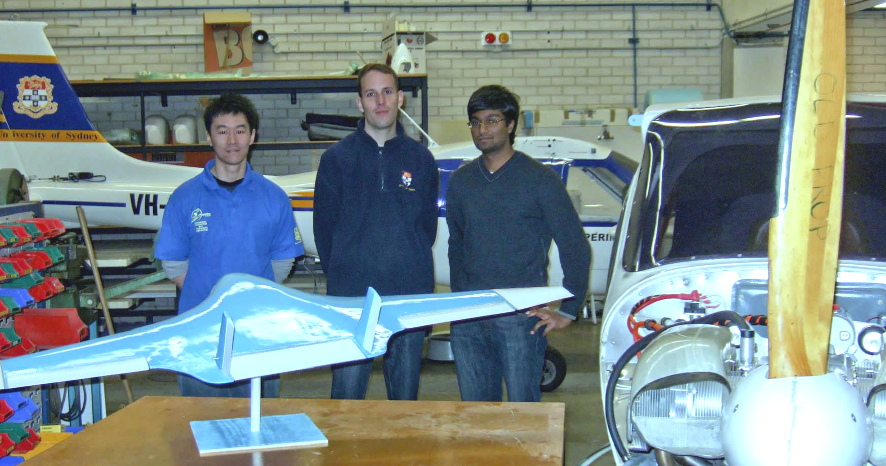- Srinivas Vasista (2009-2011)
- Derrick Ho (2010-2012)
- Kai Lehmkuehler (2011-2013)
Student : Srinivas Vasista (2009-2011), Project : Morphing Wing Structures, Supervisor : Liyong Tong
I am designing a type of aircraft structure that will allow the aircraft wing to change its shape while it is flying.
The reason for doing this is that the aircraft will be more fuel efficient and have better performance. This
type of structure is known as a ‘morphing wing’ and ideally the best way to envisage this is to consider how
birds control their wings. Early in my research I looked at how muscles work and how plants can move, such
as the Venus fly-trap snapping shut or a sunflower moving towards the sun. The movement of plants is
particularly interesting: at the microscopic level, pressure is contained within the plant cells and variations in
this pressure cause the cell walls to expand and contract. This is accumulated over the millions of cells
within the plant and the result is macroscopic shape change. The concept I am developing follows these
principles. In my work, I have designed and optimised a cellular structure which expands and bends when
the structure is pressurised with air. This type of structure could be fitted in the rear end of the wing, to form
a flap or aileron.
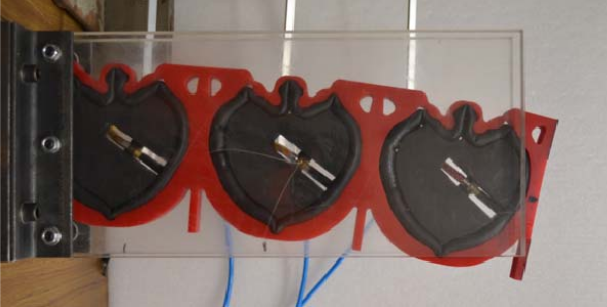
Above is a structure I manufactured and tested. The
shape of each cell is crucial and was determined using
optimisation methods. This photo shows how the structure
bends when pressurised air pushes against the internal
edges.
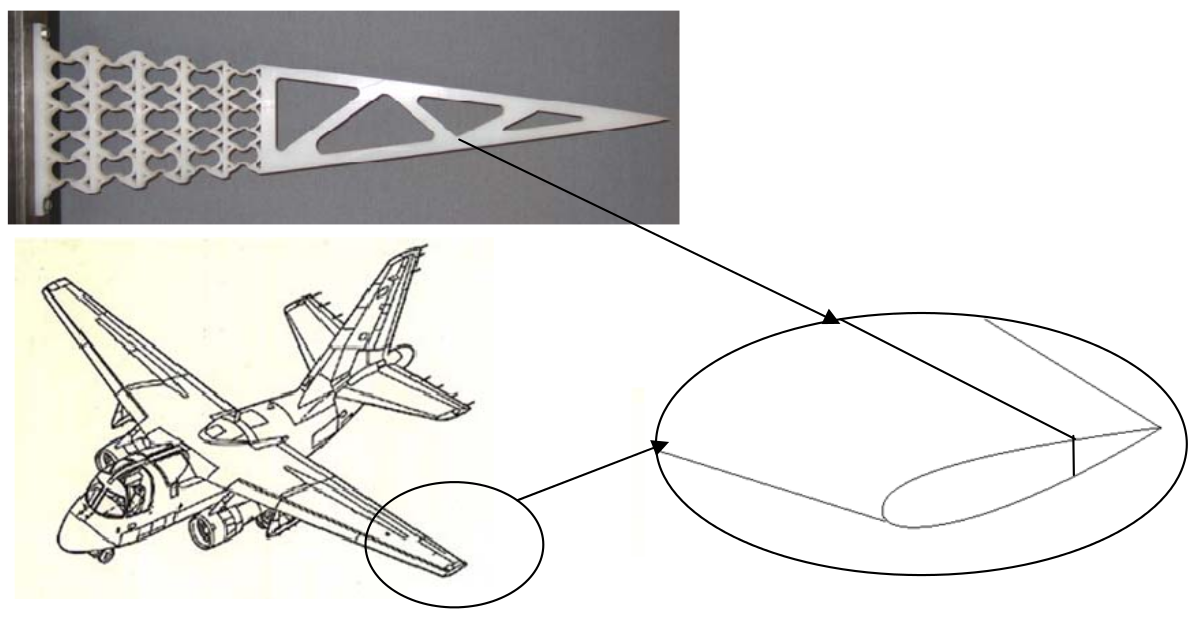
Above is another structure I manufactured. This
structure is in the shape of trailing edge of the
wing.
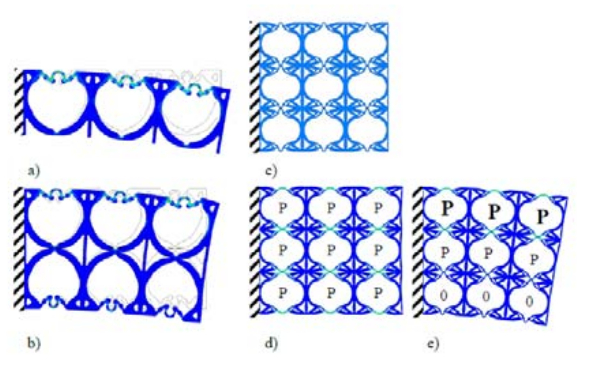
Other cellular morphing structure designs
This work has been accepted for publications in the Journal of Aircraft and AIAA Journal and I aim to present
this work in the United States next year. I would like to thank the R.W. McKenzie Centre for Aeronautical
Sciences and Technology for supporting me in this research.
Back to Top
Student : Derrick Ho (2010-2012), Project : VTOL UAV design, Supervisor : KC Wong
Over the past few years I have developed a strong interest in UAV design and development and have
continued to pursue this aspiration by enrolling into a postgraduate research degree at The University of
Sydney with the privilege of being a recipient of the R.W. McKenzie Supplementary Scholarship in
Aeronautical Science and Technology.
My research is dedicated in exploring exotic UAV configurations and flying concepts that utilises a
common lifting surface for both rotational and non-rotational flight. Focus in autorotational flight evident
in nature.s Samara seed (maple leaf) offers VTOL, hover and translational capabilities similar to
conventional rotorcraft. Although this concept shows much promise, a tip-powered version still retains
the inefficiencies for translational flight similar to conventional rotorcraft. Morphing airframes
characteristic of flying wings found in birds exhibit high efficiency in gliding, which in turn inspires more
advanced flight platform design for extended cruise optimisation. This fusion of single-bladed
monocopter and monoplane flying wing systems then gives rise to a novel bi-mode bio-inspired UAV
concept, where a rotorcraft with low thrust-to-weight hover capability is able to overcome their
dissymmetry in thrust and interchange to forward flight fixed wing configuration with high cruise
efficiency.
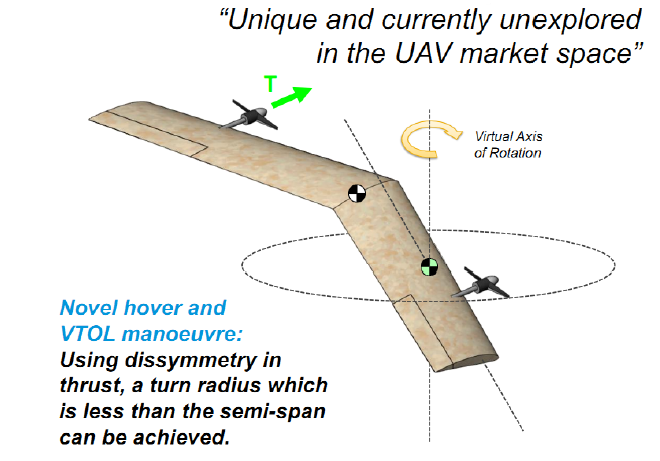
Coupled with the technological advancements and inspiration from nature, the bio-inspire bi-mode UAV
concept offers a fresh breed of aircraft platform opportunities which may revolutionise VTOL systems as
shown below:
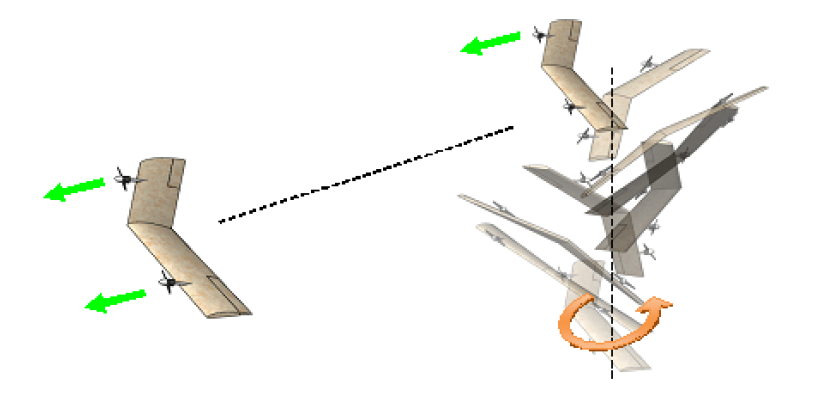
Relationships between fixed-wing forward flight capability and rotational capacity of asymmetric monowing
configurations in interchangeable operation are explored and validated with experimental apparatus
and a first-pass flying demonstrator presented by the end of the research program.
Back to Top
Student : Kai Kehmkuehler (2011-2013), Project : Blended wing-body design, Supervisor : KC Wong
I am working on the Sydney University.s Blended Wing Body project, which aims to adapt the blended wing
body (BWB) configuration for use as an unmanned air vehicle (UAV). The BWB configuration has attracted
considerable interest globally over the past decade as a very efficient aircraft for passenger transport. By
blending the wing into the fuselage without sharp discontinuities, lead to several advantages: the airframe
can have very low drag and thus highly fuel efficient; and the fuselage generates significant lift, which can
further improve the flight performance.
My project is to design a BWB platform for use as an UAV with 3m wingspan, which can be used for
surveillance or other long duration missions. As most of the other BWB research is concerned with large
aeroplanes, our design is considerably different, because it is going to fly at much lower speeds and
altitudes. An initial half-scale prototype has been constructed and we have started its flight testing. The
current aircraft has a few properties that make it difficult to fly in certain conditions. These problems are
typical for the BWB platform and I am going to try to improve on some of these characteristics by using
design features of other aircraft types to see if they will work on this particular aircraft type.
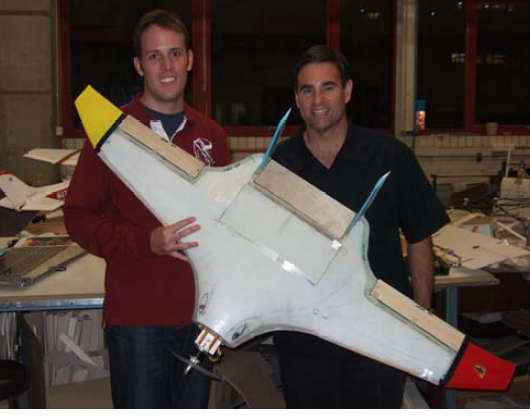
Blended Wing-Body UAV, Kai with Astronaut Greg Chamitoff
The initial design of the aircraft was done for an international collaborative design project (Hyperion) between
the University of Sydney, the University of Stuttgart in Germany and the University of Colorado in the USA.
The aim of that project was the design of a small size BWB with an international team, where the workload
was split between the different groups. In Sydney, we did the aerodynamic design of the aircraft and
performed wind tunnel testing on a half scale model to prepare for flight testing of a full scale version in the
USA. Over Easter this year I travelled to Colorado, where we successfully flew the prototype.
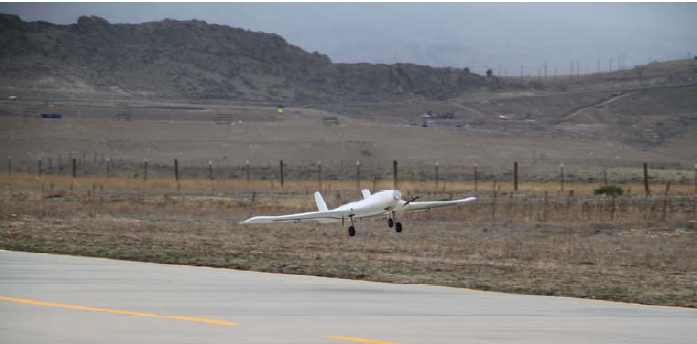
To perform the wind tunnel tests on the aircraft, the measurement systems of the University's 7x5 feet wind
tunnel had to be modernised. This was made possible through the support of the RW McKenzie Resource
Centre which provided funding for the upgrades. I designed a new mounting and positioning device that
integrates with the existing tunnel systems. This support is capable of positioning the model in two different
axes and can measure all six force and moment components acting on the aircraft from the airflow. A new
data acquisition system that allows the acquisition of sensor data into the computer for processing was also
designed and programmed. The system works well and has confirmed many theoretical predictions as well
as identified several effects that were not included in the computer modelling. The new wind tunnel balance
has already given excellent data to improve our BWB aircraft.
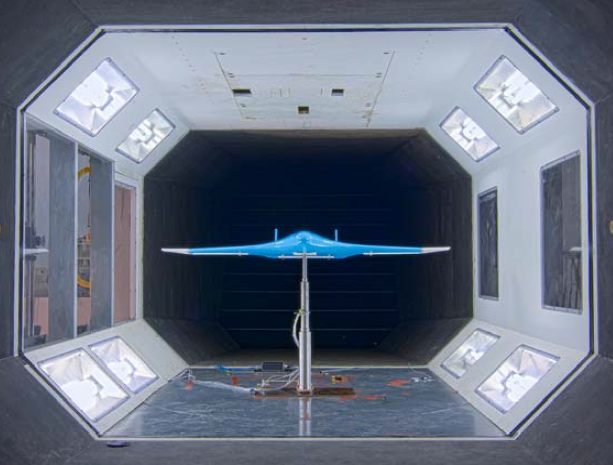
BWB undergoing testing in Sydney Uni 7ft x 5 ft tunnel
Currently, the BWB project is still in the prototyping phase with more and more parts being made and tested.
I expect to discover many exciting facts during the testing phase that will allow me to develop an optimised
version of the aircraft. I would like to thank the RW McKenzie Centre for their support of my work so far.
Back to Top
